The pandemic worsened food insecurity for many people in the U.S., putting more people at risk for not only hunger but for chronic diseases that can be managed with access to nutritious, fresh food. In Helping SNAP Consumers During Economic Headwinds from Numerator, we get a current read on food security, the SNAP program, and the challenges of chronic health management that are intimately tied.
To set some context on this current challenge to peoples’ health, the U.S. is facing the official end of the pandemic emergency on May 11, 2023. At that point, support for government-sponsored programs that have supported American health citizens’ well-being since the emergency of COVID-19. This included expansion of SNAP and nutrition benefits, among many other services.
Exacerbating food insecurity in America, note that food price inflation rose 9.5% in February 2023 versus February 2022; prices will increase by 7.9% in 2023, the U.S. Department of Agriculture expects.
People living in low-income households are facing growing stress and insecurity when it comes to food, resulting in a “hunger cliff.” It’s a “cliff,” explained Ellen Vollinger of the Food Research and Action Center, “because this is a very abrupt change in what people are going to have in their food budget,” affecting millions of people in the U.S.
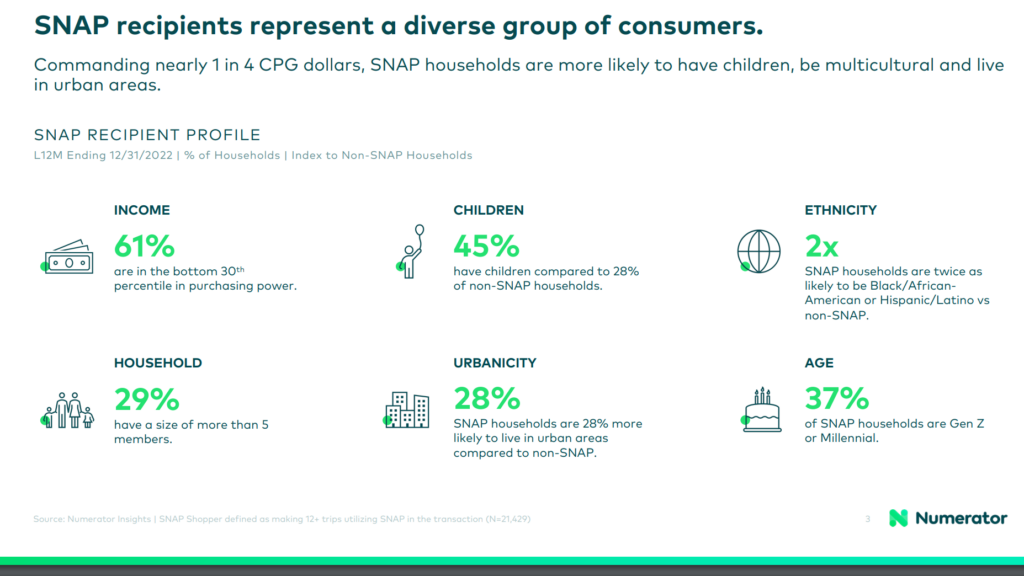
With these data points in mind, we can dig into Numerator’s look into SNAP consumers’ home economics. The first chart shown here from the report profiles enrollees in SNAP programs, the Supplementary Nutrition Assistance Program which is part of the USDA. Numerator, a consumer market research company, profiled SNAP recipients at the end of 2022, finding that 61% of the enrollees were in the bottom 30th percentile of income in America. Nearly one in two SNAP households had children versus 28% of non-SNAP homes. And SNAP households were twice as likely to be Black/African-American or Hispanic/Latino in their race/ethnicity compared with non-SNAP households.
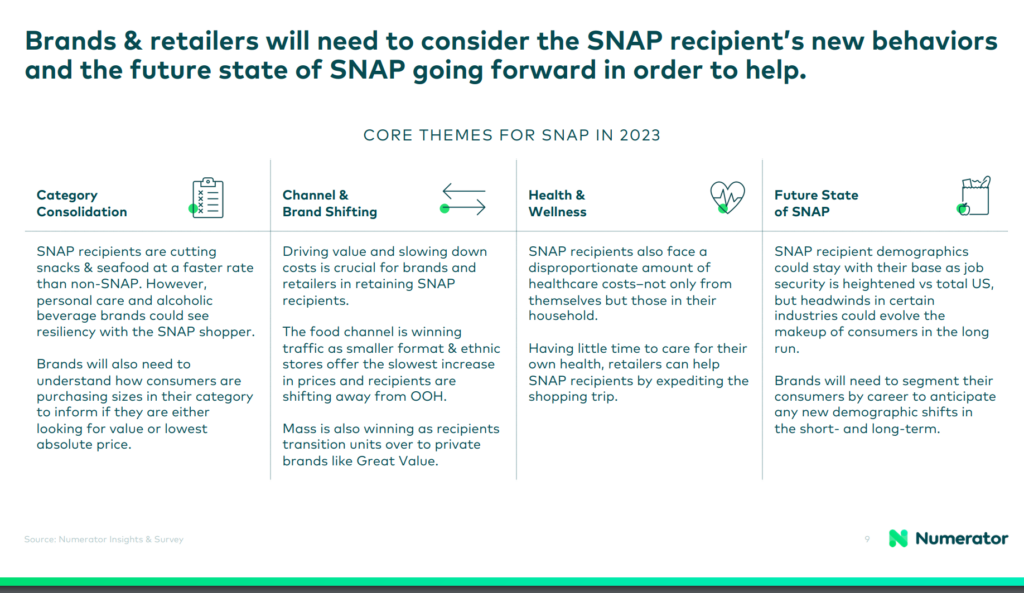
This study looked into the “headwinds” facing SNAP consumers’ home economics, recognizing that the COVID-19 stimulus funds helped to buoy food-insecure householders for many months However, as these funds ran down and out, the inflationary era kicked in the U.S. economy. SNAP households are now more likely to be “overwhelmed” with financial burdens, Numerator observed. These folks heavily over-index with being struggling households, the study found, compared with other U.S. families. One in four are unable to buy enough food to feed their family, and most have low confidence in the economy improving in the next three months.
There are four themes for SNAP benefits and enrollees in 2023, explained in the second chart here: brands will need to understand how SNAP recipients are adjusting their shopping baskets, looking for value and lower prices; SNAP consumers are buying more private label products (which are lower-priced); health and wellness are key to SNAP recipients purchasing behaviors, challenged by time constraints in their daily lives; and, brands need to segment consumers looking, in part, at their occupations — heavily indexed toward healthcare and homecare, housekeeping, childcare/daycare, transportation, and other work categories.
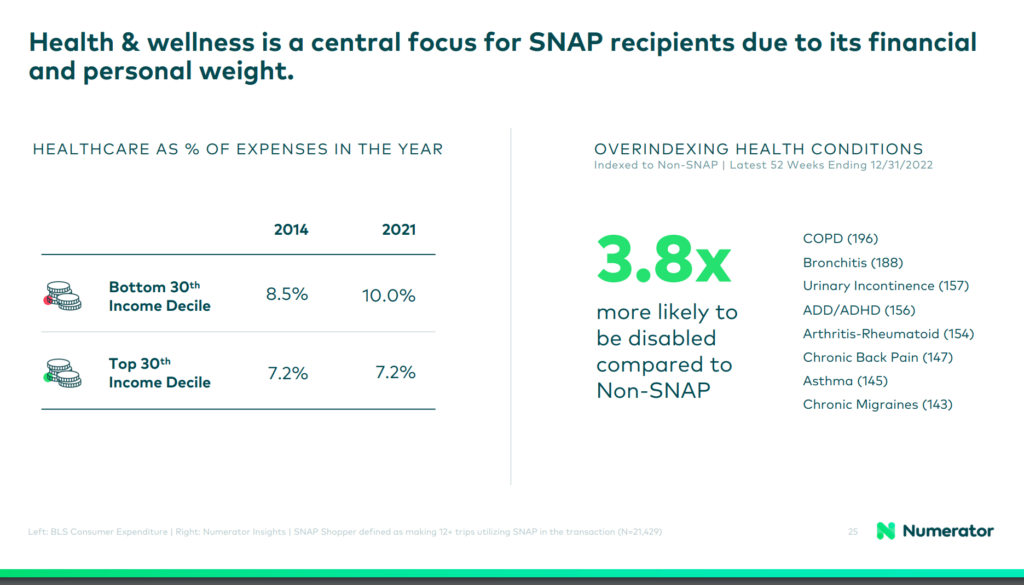
Keep in mind these occupational types when considering SNAP enrollees health and wellness goals and challenges. These people are nearly 4 times as likely to be disabled than consumers not enrolled in SNAP benefits: these conditions include respiratory health (COPD, asthma and bronchitis), back pain, and migraines, among other issues.
We know folks dealing with one social determinant risk tend to have more than one risk, and in this instance it’s a greater burden of heath expenses over the course of a year.
=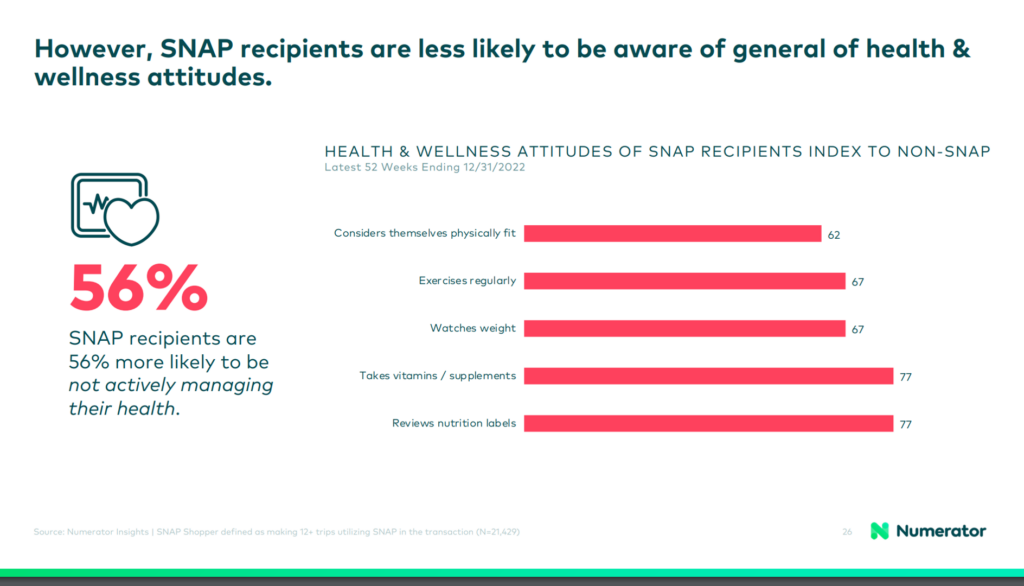
These chronic condition management challenges are worsened, risk-wise, due to the fact that SNAP enrollees tend to be time-challenged, and of course, financially insecure as well as food-insecure. Fifty0six percent of these consumers are less likely to not be actively managing their health.
One factor Numerator identified that may constrain peoples’ ability to self-care is that SNAP recipients are time-strapped as they are two times more likely to be a caregiver for over 9 hours a week. One in three SNAP enrollees shops at least twice a week as a caregiver, and one-third have the person they care for living in their home (1.2x more likely than non-SNAP recipients).
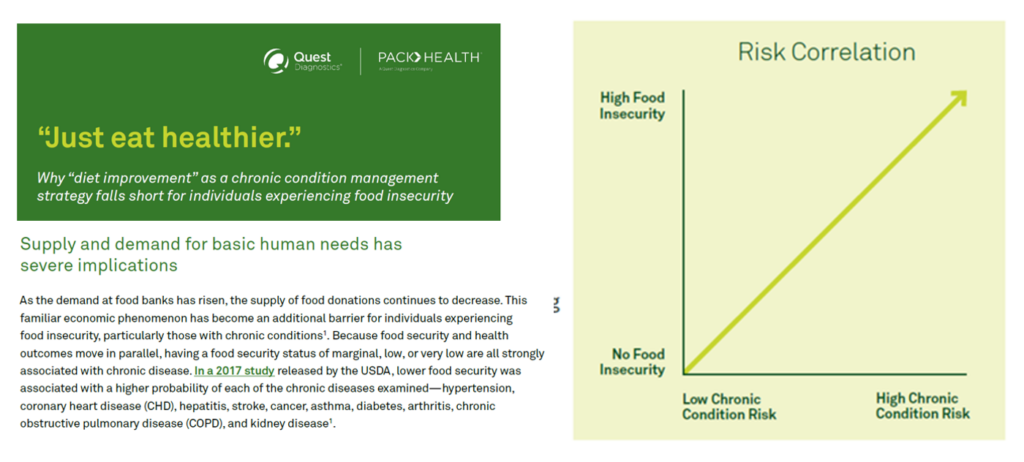
Health Populi’s Hot Points: “Supply and demand for basic human needs has severe implications,” a brief co-sponsored by Quest Diagnostics and Pack Health calls out.
“Just eat healthier” implores the essay on why diet improvement as a chronic condition management strategy has not been effective for people experiencing food insecurity. The pandemic exacerbated peoples’ food insecurity in the U.S., with demand far outstripped the supply of food provided at food banks.
And food insecurity raises peoples’ risks for chronic conditions, the straight-line graph illustrates as a direct correlation. As Pack Health and Quest note, “the lack of resources isn’t just about the food itself. Those who are food insecure are also more likely to be affected by other social determinants that contribute to worsened health outcomes.”
To address the food security risk for chronic health conditions, Pack Health couples grocery and meal delivery services with nutrition education and digital coaching. Think: telehealth meats meals-on-wheels meets nutrition education.


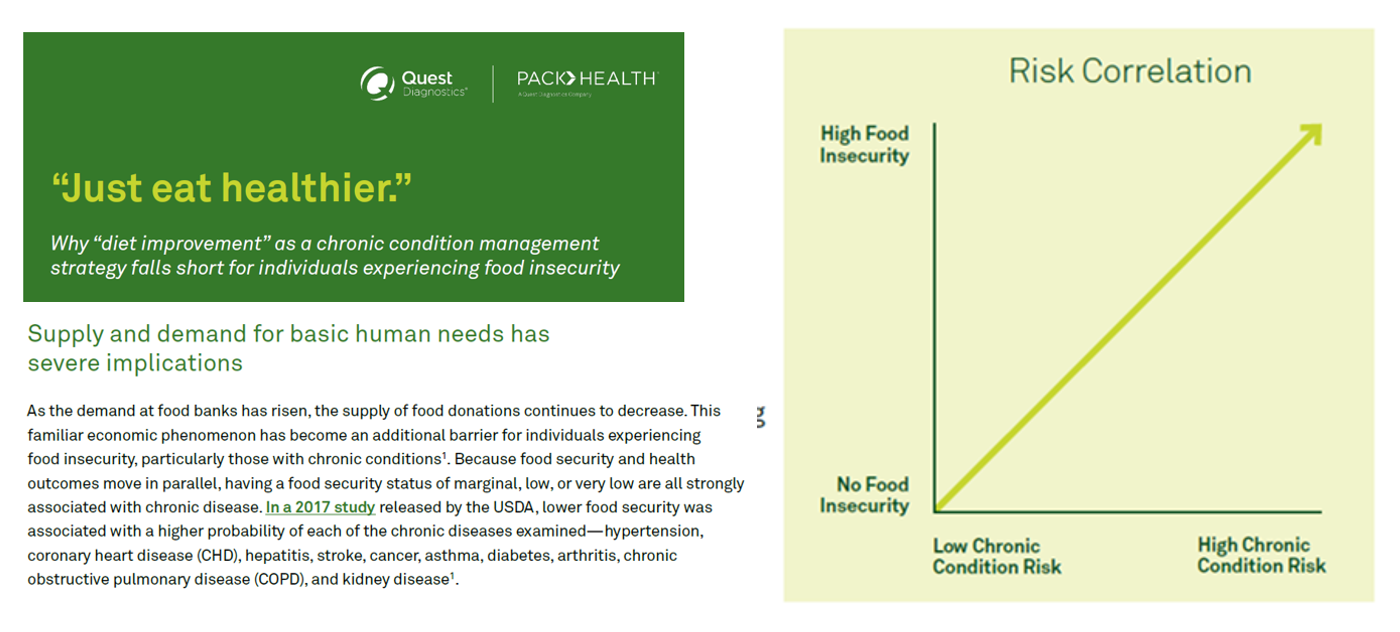


 Interviewed live on BNN Bloomberg (Canada) on the market for GLP-1 drugs for weight loss and their impact on both the health care system and consumer goods and services -- notably, food, nutrition, retail health, gyms, and other sectors.
Interviewed live on BNN Bloomberg (Canada) on the market for GLP-1 drugs for weight loss and their impact on both the health care system and consumer goods and services -- notably, food, nutrition, retail health, gyms, and other sectors. Thank you, Feedspot, for
Thank you, Feedspot, for  As you may know, I have been splitting work- and living-time between the U.S. and the E.U., most recently living in and working from Brussels. In the month of September 2024, I'll be splitting time between London and other parts of the U.K., and Italy where I'll be working with clients on consumer health, self-care and home care focused on food-as-medicine, digital health, business and scenario planning for the future...
As you may know, I have been splitting work- and living-time between the U.S. and the E.U., most recently living in and working from Brussels. In the month of September 2024, I'll be splitting time between London and other parts of the U.K., and Italy where I'll be working with clients on consumer health, self-care and home care focused on food-as-medicine, digital health, business and scenario planning for the future...